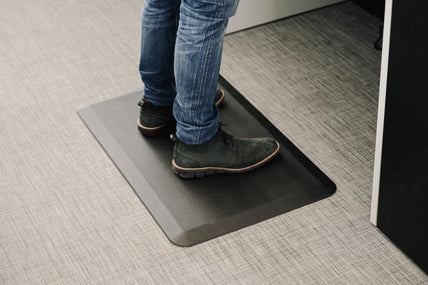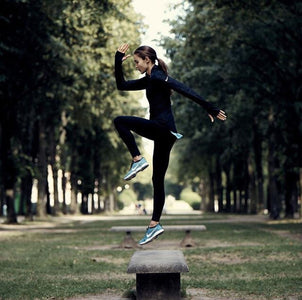The Business Case for Healthy Buildings - Our take on the report by The Urban Land Institute, Washington DC
By Daniel Angelini on June 17, 2019This is our summary of the report published by The Urban Land Institute. The full report can be found here.
Inspired by a growing body of evidence that healthy buildings can have a positive effect on both human health and real estate performance, this report highlights the key certification standards in use in the marketplace, explores recent research on the impact of health-promoting design, and offers profiles of five projects that have been early adopters of healthy building and workplace design and management practices.
Supported by a growing body of research indicating that some chronic health conditions can be prevented or reversed with lifestyle changes, and that health-promoting design can enhance productivity and reduce employee turnover and absenteeism, real estate leaders worldwide are looking to create environments that support the healthy lifestyles that employees seek in workplaces—where they spend one-third to one-half of their waking hours—and in homes that provide a platform for healthy lifestyles

What is a healthy building?
In the workplace, a healthy environment offers a place that employees want to be every day, and where they can focus on their work and be productive—while also keeping their immune systems up and stress levels down.
Healthy workplaces can feature a wide range of design and construction elements, including flexible open space for collaboration, activities, and events. They provide a variety of workspaces, from meeting areas to quiet zones, that offer choices on where to work. Adjustable controls for air temperature, humidity, and acoustics help create a comfortable work environment. Biophilic design, with natural views and materials, connect people to nature. And showers and lockers serve employees who run or bike to work or exercise during the day.
Harvard University’s T.H. Chan School of Public Health published The 9 Foundations of a Healthy Building.
The report examined all building types but focused on studies related to commercial office spaces. It found that:
● People work more efficiently in environments with good air quality
● Buildings constructed with low-VOC materials and finishes are less toxic.
● Comfortable temperature and humidity levels are less likely to make workers feel sick or get sick.
● Good lighting leads to better sleep at night and better productivity during the day.
● Reducing the noise level improves productivity and job satisfaction.

CBRE Netherlands conducted a study of workplace wellness in collaboration with the University of Twente additionally on this topic. The study involved the participation of 124 CBRE employees over seven months, as well as researchers in neurocognitive psychology, biomedical engineering, and business. The research team analyzed objective data and interviews about how employees felt and their work performance.
Results from the 2016 study, found in CBRE’s The Snowball Effects of Healthy Offices, include:
In building design and construction:
- Stairways with enticing artwork, enhanced lighting, and other design elements encourage people to use the stairs instead of elevators.
- Advanced lighting is designed to help people see as clearly as possible and to avoid disrupting natural 24-hour circadian rhythms (sleep/wake cycle) with brightness and color spectrum adjustments to mimic the solar clock and its effects on the brain.
- Biophilic air treatment cleans the air with plants that filter carbon dioxide (CO2) and volatile organic compounds (VOCs), and provides fresh oxygen for interior spaces as well as a restorative effect on the mind. In office management:
- Cardiovascular equipment like treadmill desks get employees out of their seats and moving to improve circulation.
- Advanced water purification systems reduce the presence of disinfectant byproducts, chlorine, pesticides, and some pharmaceutical and personal care products.
- Drinking-water stations at convenient locations encourage employees to hydrate.
- Stretching and relaxation areas on each floor encourage employees to stay limber and provide a place to nap, meditate, practice yoga, and recharge. In office programming:
- A wellness concierge provides health and wellness guidance on request.
- Nutritious snacks and dietary information on display promote healthy eating habits.
- A juice station offers nutritious snacks and fruits and vegetables
![]()
People exposed to “healthy spots,” with nature murals and live and even artificial plants, perceived their work performance to be 10 percent better, and 76 percent felt more energized, 78 percent felt happier, and 65 percent felt healthier.
- Installation of a lighting system with a timer on a circadian-friendly schedule that adjusted the brightness and color of lighting throughout the day led people to say their work performance was 18 percent better, and 71 percent felt more energized, 76 percent felt happier, and 50 percent felt healthier.
Healthy alternatives to sitting in standard office chairs—such as holding walking meetings and using medicine balls, treadmills, stationary bikes, and standing conference tables—prompted people to perceive that their work performance improved by 12 percent, and 65 percent felt more energized, 36 percent felt happier, and 71 percent felt healthier.
- Selection of healthy snacks and drinks rather than usual vending-machine fare led people to say their work performance had improved 20 percent, and 78 percent felt more energized, 66 percent felt happier, and 52 percent felt healthier.
- Engaging in meditation, yoga, power naps, and massage at work led people to say their work performance was 16 percent better, and 66 percent felt more energized, 63 percent felt happier, and 53 percent felt healthier.
- Many employees took their healthy environment and lifestyle changes home with them, leading to a “snowball effect” that magnified the positive workplace changes

Healthy alternatives to sitting in standard office chairs—such as holding walking meetings and using medicine balls, treadmills, stationary bikes, and standing conference tables—prompted people to perceive that their work performance improved by 12 percent, and 65 percent felt more energized, 36 percent felt happier, and 71 percent felt healthier.
- Selection of healthy snacks and drinks rather than usual vending-machine fare led people to say their work performance had improved 20 percent, and 78 percent felt more energized, 66 percent felt happier, and 52 percent felt healthier.
- Engaging in meditation, yoga, power naps, and massage at work led people to say their work performance was 16 percent better, and 66 percent felt more energized, 63 percent felt happier, and 53 percent felt healthier.
- Many employees took their healthy environment and lifestyle changes home with them, leading to a “snowball effect” that magnified (include table - page 7)
Some key drivers of the value proposition for healthy buildings, identified in general research, include the following:
Healthy buildings and workplaces can help businesses attract and retain top employees.
Healthier buildings can lead to employees who stay in their jobs longer, are more engaged, and are absent less, translating into benefits for employers.










